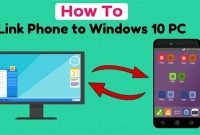If you are sick of poor phone service and looking for ways to boost it, you’ve come to the right place. Phone service is more important than ever, and it can be frustrating when calls drop or text messages fail to send. Fortunately, there are several effective tips you can try to improve your phone service and stay connected no matter where you go. From choosing the right carrier to optimizing your settings, read on for our top tips on how to boost your phone service.

Understanding Phone Service Speed and Coverage
When it comes to phone service, two main factors affect the overall performance of your mobile device: speed and coverage. Understanding these two components will help you determine how to optimize your phone performance and connectivity.
Phone Service Speed
Phone service speed refers to the amount of time it takes for your device to connect to the internet or download data. This is measured in megabits per second (Mbps), and the higher the Mbps, the faster your phone’s speed. Good phone service speed ensures fast webpage loading times, smooth video streaming, and quick file downloads.
One tip to increase your phone service speed is by using Wi-Fi instead of cellular data. Wi-Fi is often faster and uses less data than cellular networks, which can save you money on your phone bill.
Phone Service Coverage
Phone service coverage refers to the strength and availability of your phone’s signal. Poor coverage zones can result in dropped calls, slow internet speeds, and unstable connectivity. The coverage of your phone service depends on the location, your carrier, and the kind of phone you have.
To improve your phone service coverage, consider switching to a carrier that has better network coverage in your area. If you are in a remote location, try using a network extender or signal booster to enhance the signal strength of your device.
How to Improve Your Phone’s Speed
Is your phone slowing down and becoming frustrating to use? Luckily, there are several effective tips you can use to boost your phone’s speed and performance.
Clear Cache Regularly
One of the main reasons why your phone slows down is due to a buildup of cached data. Cached data are temporary files that apps store on your phone’s storage to help them open and perform faster. But when too much cached data accumulates, it takes up valuable storage space and slows down your phone. Therefore, it’s essential to regularly clear your phone’s cache to free up space and improve performance. Here’s how to do it:
- Go to your Settings and scroll down
- Tap on Storage and USB
- Select Cached Data
- Tap OK to confirm clearing the cache
Disable Unnecessary Apps
Your phone’s performance is also affected by the number of apps that are running at any given time. If you have too many apps running, it causes your phone to use more of its available RAM and slows down other app processes. Therefore, it’s crucial to disable apps that you’re not using. Here’s how to do it:
- Go to Settings
- Tap on Apps or App Manager
- Select the app you want to disable
- Tap on Disable
Update Software Regularly
Updating your phone’s software is essential not only for its security but also to enhance its performance. Software updates often include bug fixes that can help fix any issues that may be slowing down your phone. It’s essential to regularly check for software updates and install them as soon as possible. Here’s how to do it:
- Go to Settings
- Tap on About Phone
- Select Software Updates
- If an update is available, tap Download and Install
By following these practical tips, you can easily boost your phone’s speed and performance. Try them out and enjoy a faster and smoother phone experience.
Caring for Your Phone’s Battery Life
Having a fully charged phone is essential for a productive day. You don’t want your phone dying in the middle of an important call or just before taking an important picture.
Maximizing Your Battery Life
The best way to keep your battery from dying too soon is to make sure it lasts longer. Here are some tips for extending your battery life:
- Reduce screen brightness – dimming your screen can save a lot of energy.
- Turn off mobile data – unless you’re constantly using the internet, there’s no point in keeping it on all the time.
- Disable push notifications – allow only priority notifications that you wouldn’t want to miss. Turn off notifications for app updates or other unimportant interruptions.
- Avoid extreme temperatures – batteries are affected by extreme heat or cold. Don’t leave your phone in the sun and try to keep it in a warm place during cold weather conditions.
Maximizing Your Phone’s Signal Strength
Having bad reception and struggling to hear clearly is a common annoyance when using a phone, but luckily there are some simple steps you can take to improve your phone’s signal strength.
Finding the Ideal Spot for Your Phone
The location of your phone can play a big factor in the strength of your signal. In general, being higher up and closer to a window or outside will result in a stronger signal. When at home or in a building, try moving around to different areas and see if the signal strength improves. If you’re outside, avoid being in areas surrounded by tall buildings or natural obstructions such as mountains.
Using Signal Boosters
If moving to a different spot doesn’t work, or if you consistently struggle with poor signal strength, consider investing in a signal booster. A signal booster is a device that helps increase the strength of a signal. There are several types of signal boosters on the market, ranging from simple plug-in devices to more complex ones that can boost signals for an entire building. If you are unsure which type of signal booster to get, research online or consult a professional for guidance.
Optimizing Your Phone’s Settings
Many phones have settings that can be tweaked to improve signal strength. For example, you can try turning on “Airplane Mode” for a few seconds and then turning it back off, which can help reset your phone’s connection to the nearest tower. Additionally, try turning off irrelevant apps that may be constantly sending or receiving data in the background, as this can result in your phone having less bandwidth for voice calls. Finally, try switching between LTE, 3G, and 2G network modes on your phone to see which one has the strongest signal in your area.
Check for Network Coverage Maps
Most cellular carriers have coverage maps on their websites that show the strength and coverage of signals in certain areas. Check these maps to see if there are areas near you with weaker signal strength, and avoid them if possible. Additionally, if you frequently travel to other areas, check the coverage maps for those regions to ensure your carrier provides adequate service there.
Utilizing Wi-Fi Calling and Texting
If you’re experiencing poor signal strength in your location, or just want to save on cellular data usage, Wi-Fi calling and texting is the way to go! Not only is it an efficient method to communicate with loved ones and colleagues, but it also saves you from paying extra for consuming cellular data. If you’re unsure how to set it up, follow our simple guide below.
Setting Up Wi-Fi Calling and Texting
The process of setting up Wi-Fi calling and texting is straightforward and easy, especially with most smartphones providing a built-in feature to make it even simpler. Here are the steps you need to follow:
- Ensure your smartphone is connected to a Wi-Fi network.
- Go to “Settings” on your smartphone.
- Locate the “Wi-Fi calling” option and switch it on.
- Follow the prompts that appear on your screen to complete the setup process.
Once you’ve completed the setup process, you’ll be able to make and receive calls and texts without any issue or using your cellular data. Wi-Fi calling and texting work perfectly well with most apps, including WhatsApp and Messenger, to name a few.
Tip: Keep in mind that not all smartphone models support Wi-Fi calling and texting. Check with your phone’s manufacturer or your carrier to see if your model supports it.
Dealing with Common Phone Issues
If you use a phone, you know how important a good connection is. Dropped calls, slow internet, and poor connection can be very frustrating and can even affect your work and daily life. Fortunately, there are many ways to deal with these common phone issues. Here are some effective tips:
1. Check Your Signal
The strength of your signal determines the quality of your phone service. If you’re experiencing poor connection or dropped calls, it could be because of a weak signal. Check your signal indicator and make sure you’re in a place where the signal is strong. If the signal is weak, try moving to a different location or going outside to get a better signal.
2. Restart Your Phone
If you’re experiencing slow internet or your phone is acting up, try restarting it. This can help clear the memory and improve performance. To restart your phone, turn it off, wait a few seconds, and then turn it back on.
3. Update Your Phone Software
Updating your phone’s software can help improve its performance and fix bugs. Check for updates regularly and make sure you have the latest version installed. This can often solve common phone issues.
4. Check Your Wi-Fi Connection
If you’re using Wi-Fi, make sure you’re connected to a secure network with a strong signal. Weak or unsecured Wi-Fi networks can cause slow internet and poor connection. If you’re having trouble with your Wi-Fi, try restarting your router or contacting your internet service provider.
5. Reset Your Network Settings
If you’re still experiencing phone issues, try resetting your network settings. This can help clear any network-related problems that may be affecting your phone. To reset your network settings, go to your phone’s settings and select “Reset Network Settings.”
6. Get Professional Help
If you’ve tried all the above steps and still have phone issues, it may be time to seek professional help. Contact your phone service provider or a technician who specializes in phone repairs. They can help diagnose the problem and recommend a solution.
Frequently Asked Questions
| Questions | Answers |
|---|---|
| What can I do to improve my phone quality? | You can try upgrading your phone, updating your phone software, or contacting your service provider for help. |
| How can I reduce call drops? | Try to move to a location with better network coverage, switch off your phone and switch it back on, or clear your phone’s cache. |
| What is the best phone service provider? | There isn’t one-size-fits-all answer to this question. It depends on your location, budget, and specific needs. Do your research, read reviews, and compare prices before making a decision. |
| How can I improve my phone’s battery life? | You can try reducing your phone’s brightness, turning off unused apps, using a power-saving mode, or buying an external battery pack. |
| How do I know if my phone is compatible with a certain service provider? | You can check your phone’s compatibility by contacting the service provider or trying to use a SIM card from that provider. You can also check your phone’s specifications and compare them with the provider’s requirements. |
Thanks for Reading!
With these effective tips, you can boost your phone service and have a better experience talking, browsing, and texting. By following these simple steps, you can improve the quality, coverage, and speed of your phone service, and reduce common problems such as call drops, slow internet, or low battery. Remember to always keep your phone software updated, clear cache regularly, and contact your service provider for any assistance you may need. Thank you for reading and visit us again soon for more helpful tips!



